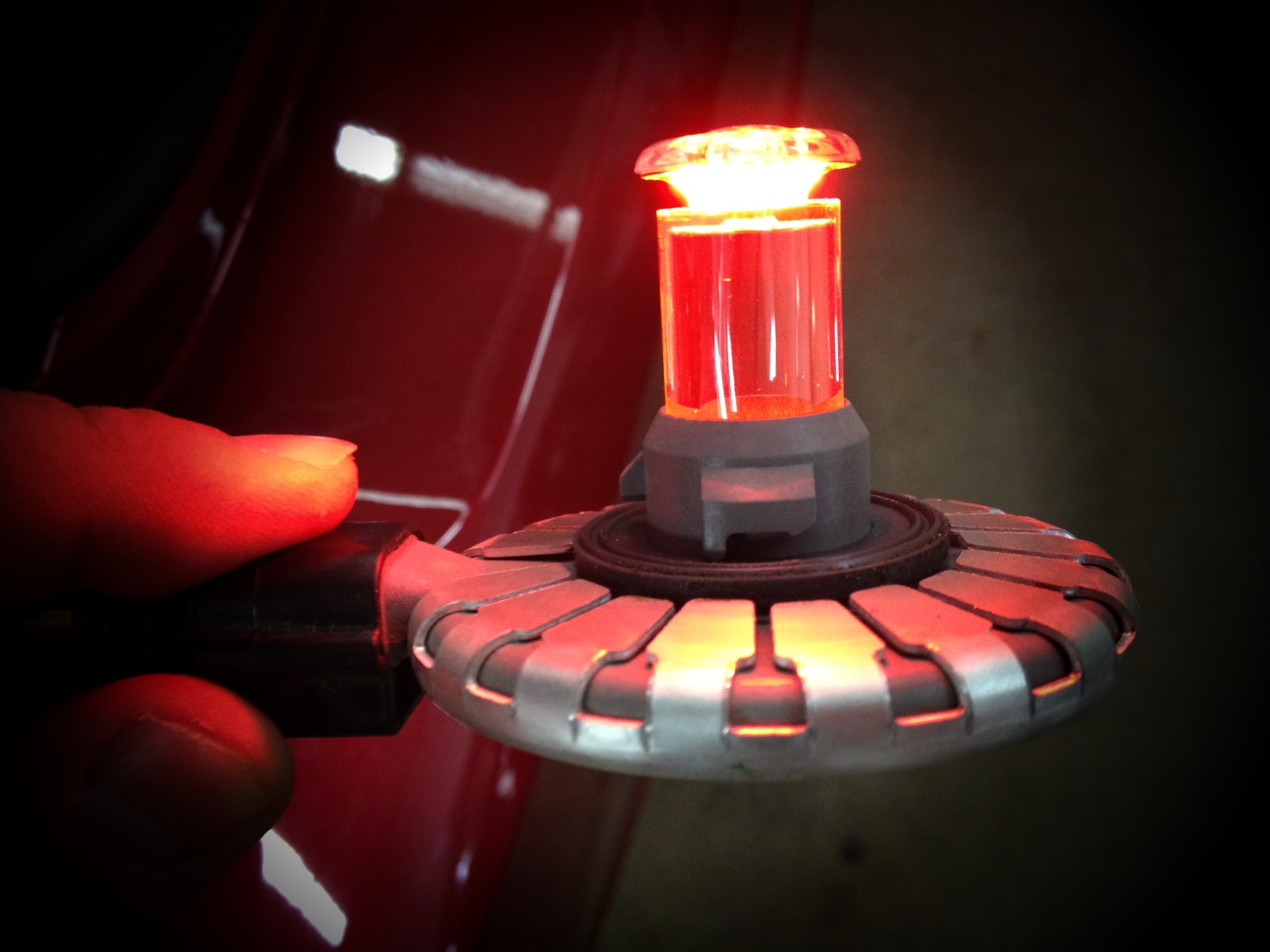
New LED technology: Reflecting LED “bulbs”
Since the introduction of LED lighting in automobiles it has been common practice for manufacturers to construct an array of forward (or rearward) facing LEDs in a housing which holds a flat structure. This flat structure holds the configuration and it projects in a linear direction. Today, showcased in the tail lights of the 2012 Chevrolet Malibu LTZ, GM has broken tradition with the use of an all new bulb-style LED apparatus (pictured below), following Ford’s lead by introducing the use of this bulb in the 2010 Mustang. In the aftermarket, when consumers would search for high quality LED bulbs they are required to purchase a product that is shaped like a traditional light bulb, but is covered with various LED bulbs. For example, here is the GTR Lighting TW6 high power LED bulb replacement:
GTR Lighting TW6 Bulb:
This type of product works great, but it doesn’t have the full 360 degree output left-to-right & top-to-bottom, forward-and-backward type of illumination like an incandescent bulb. The best an LED bulb replacement has been able to achieve is nearly solid side output and a strong forward output. But because LED bulbs have a strictly linear output (spot light) style, in order to get something useable the LED needs to be incredibly powerful, this is because a light housing relies on the reflector behind the bulb, as much as it relies on the bulb itself, to create the desired output.
The new LED “bulb” found in the new Chevy cars is part number L123OR-4C, Manufactured by Osram (Sylvania) and it is called a “Joule” bulb. Another noteworthy piece of information is that they are made in the USA. Other identifying marks on the bottom of the product are the numbers 07182011 and 102382.
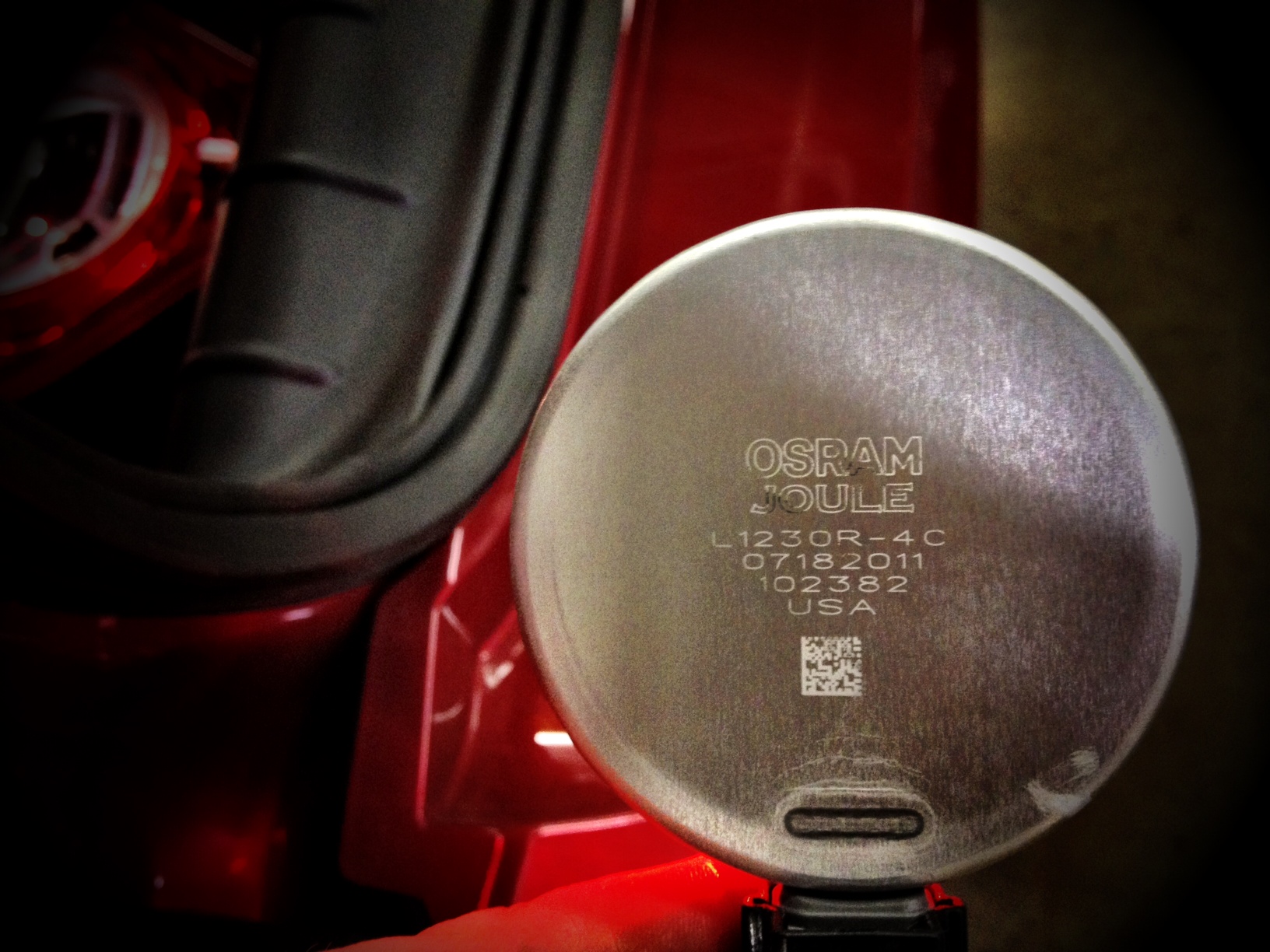
Made in the USA LED Technology
They’re bulb-shaped, so they fit into a traditional lens and reflector housing with a push-and-turn base, drastically reducing the replacement cost of the tail lamp after crash damage (costing about half as much). They typically last the life of a vehicle and are unaffected by shock and vibration, so they’re ideal in extreme applications. These so-called “Joule” lamps incorporate the LEDs, the thermal management (that ring sitting just behind the reflector housing), and the control circuitry (which resides in the connector).
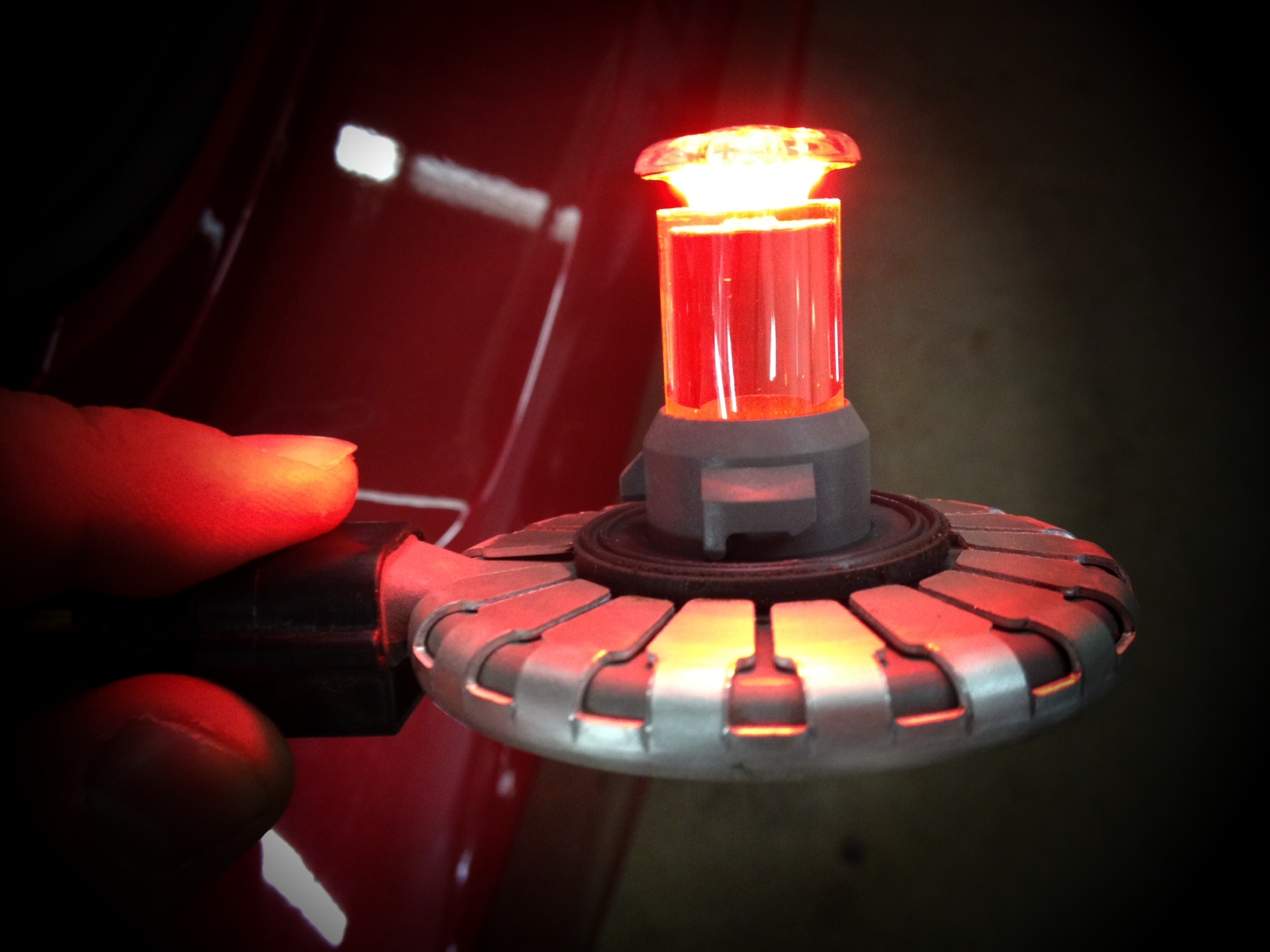
Looks like a bulb, but with LED tech.
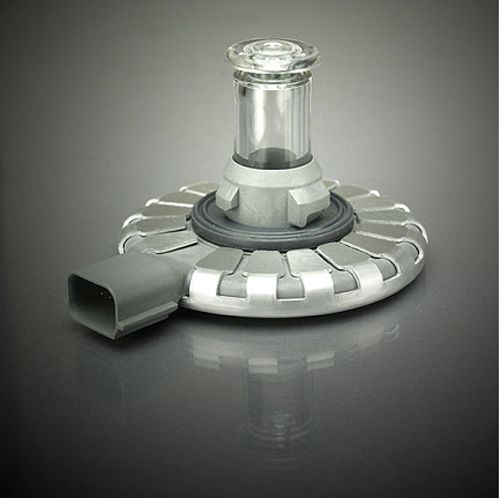
Looks like a bulb, but uses LED tech.
What makes this product so interesting is that it inserts into a traditional reflector style housing the same way a normal incandescent bulb would. It has a wire connector that plugs in with 4 wires, presumably the common ground, parking lights, brakes and a signal to activate blinking.
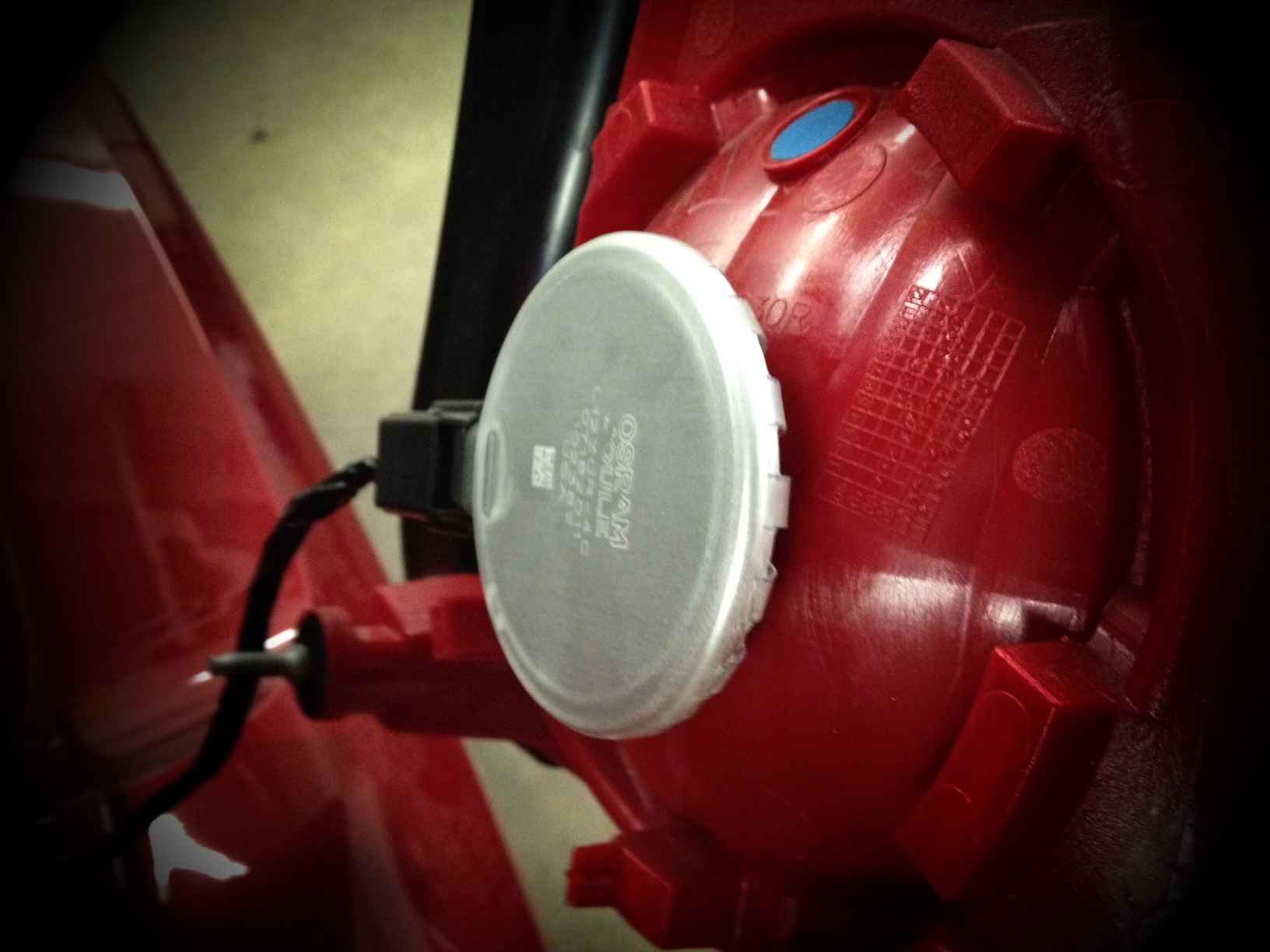
Twist style bulb LED
The bulb has several red LED components placed inside the round base that face upwards through the acrylic shell of the bulb lens, then the top is shaped like a mushroom and diffuses the light output both forward, to the side, and most importantly back to the reflector.
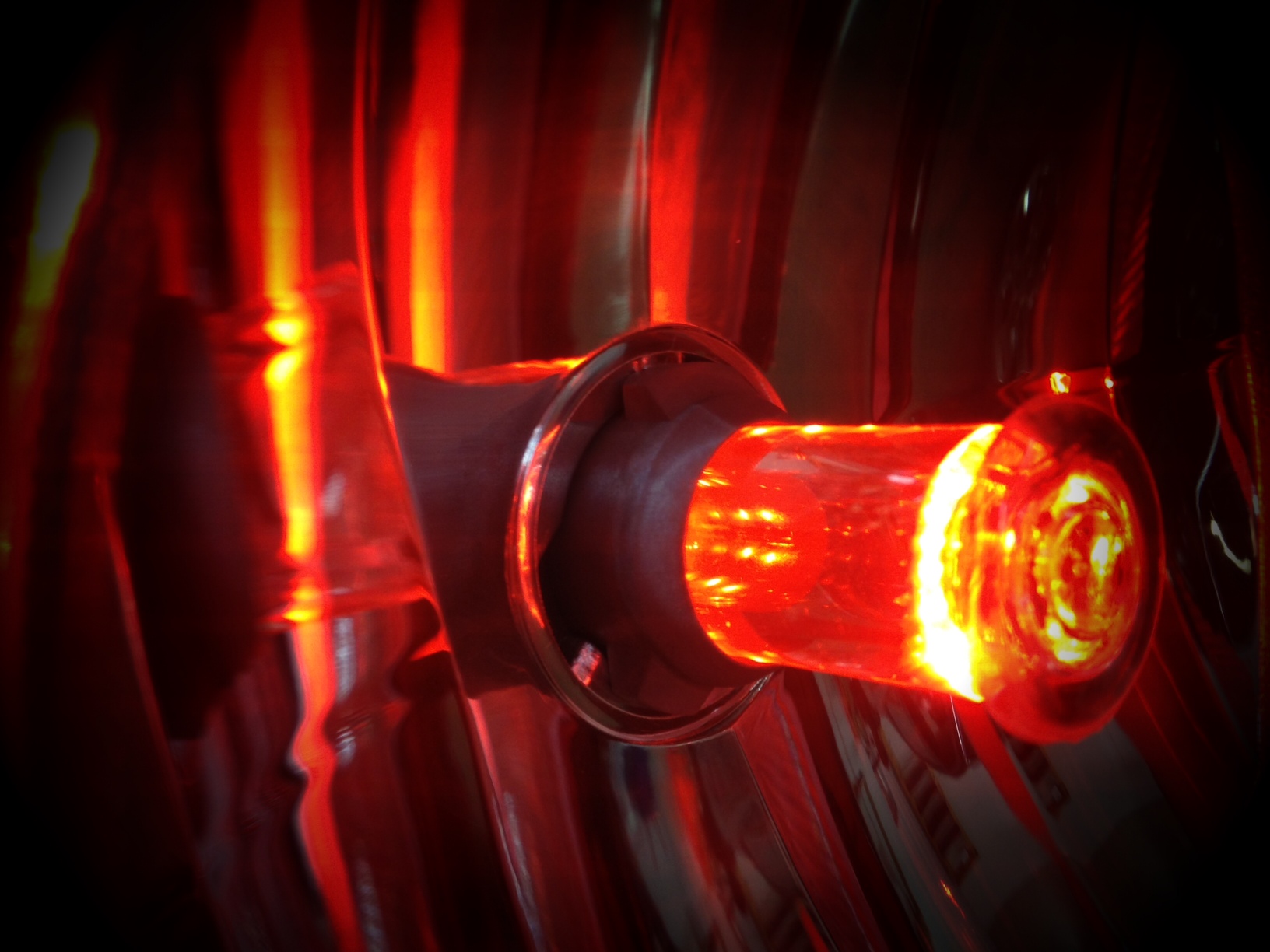
Reflects backwards onto the housing.
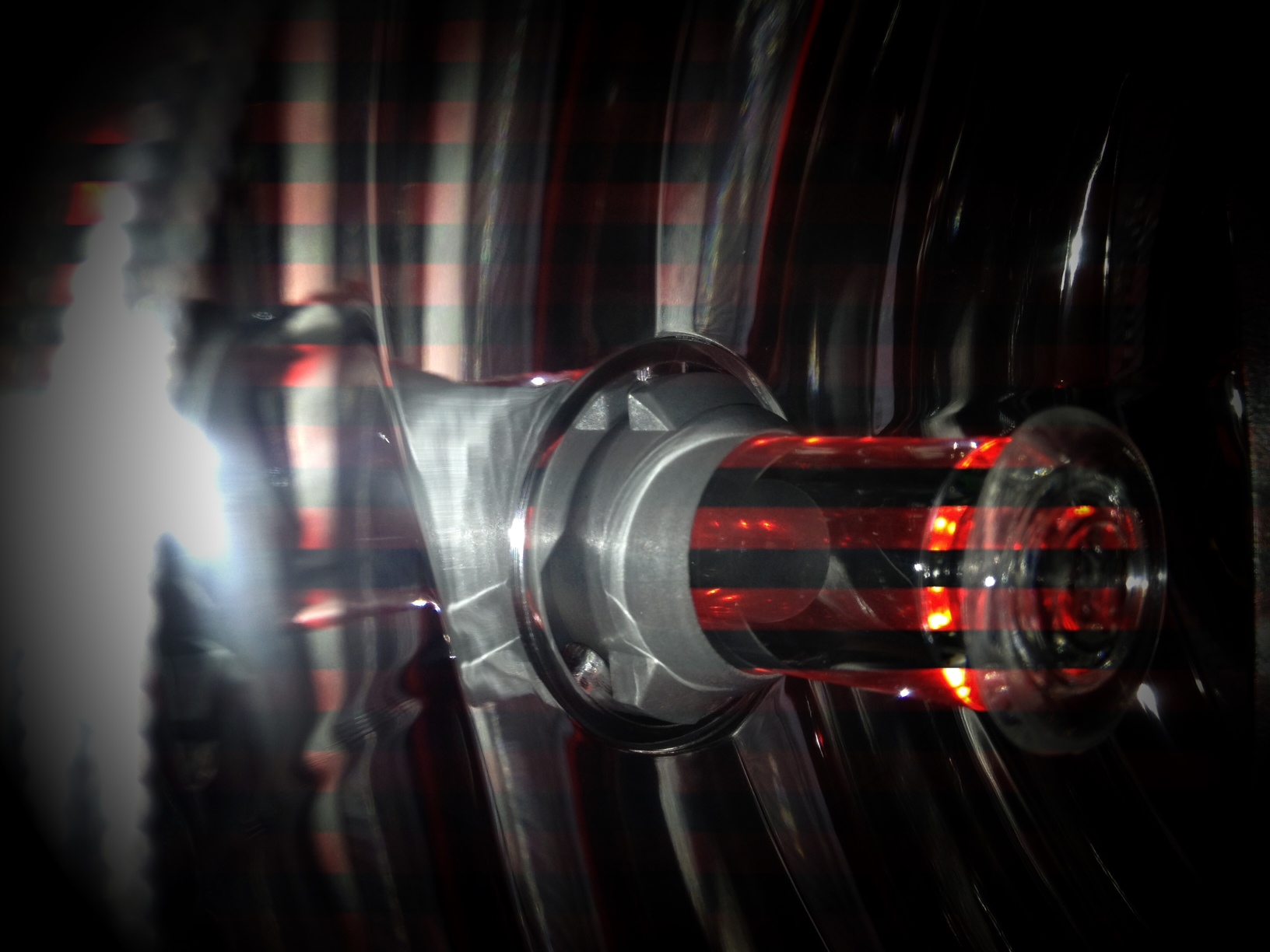
The light from the LEDs inside the base travel up the shaft to the top part that diffuses the light output into different directions.
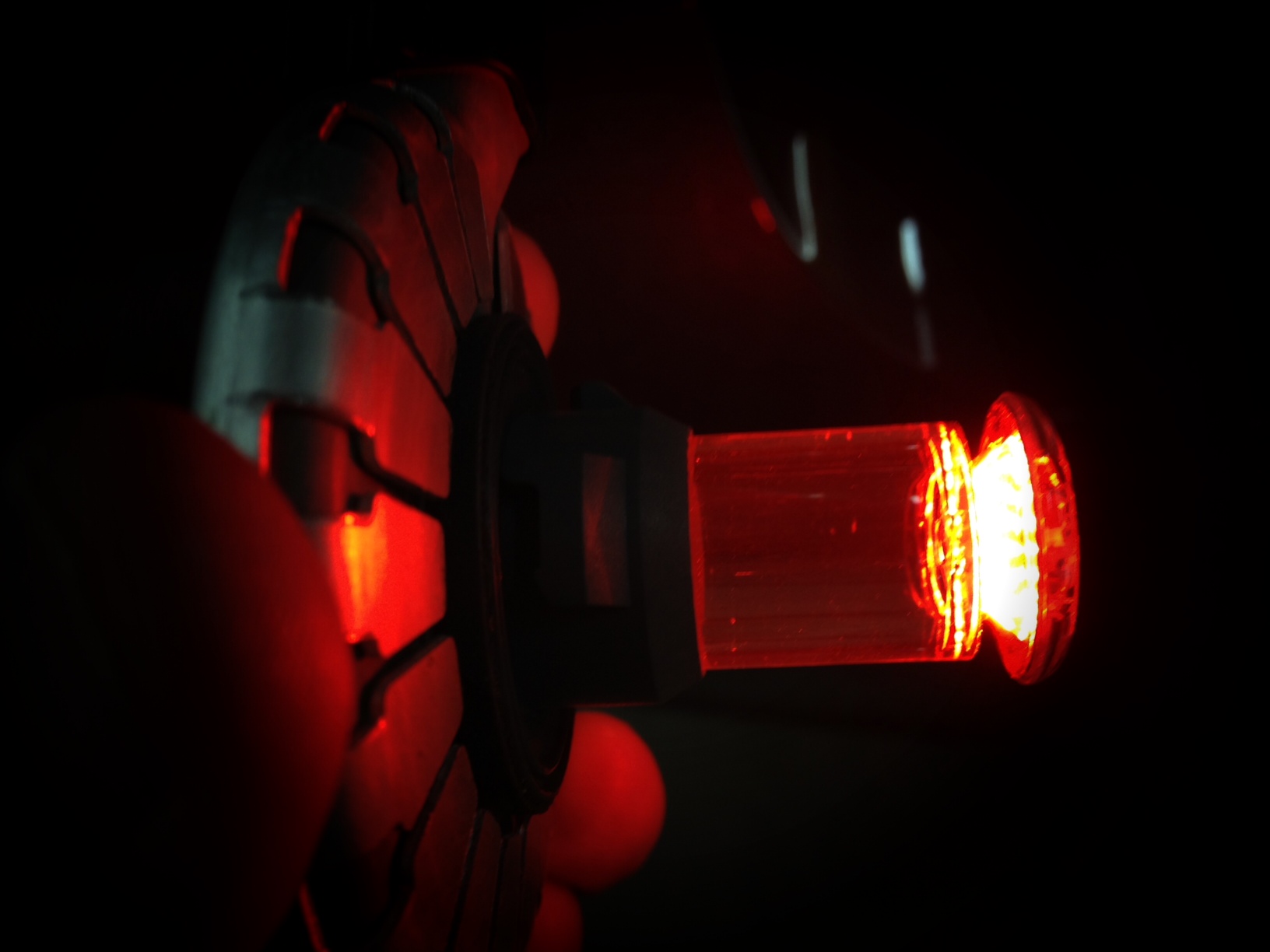
LED Bulb Side View
The way a reflector housing works, is that it simply reflects the light in different ways. It does not rely on the bulb itself to promote light output in a direction away from the housing, but back into the reflective surface and the housing itself directs the light outward. LEDs have a hard time doing this because they do not output light backwards into the housing, but only forwards and to the sides. This last picture shows how good the LED bulb developed by Sylvania for use in cars and trucks really works. The entire housing is illuminated and it is probably just as bright as a regular bulb, but creates less heat, uses less electricity and lasts longer.
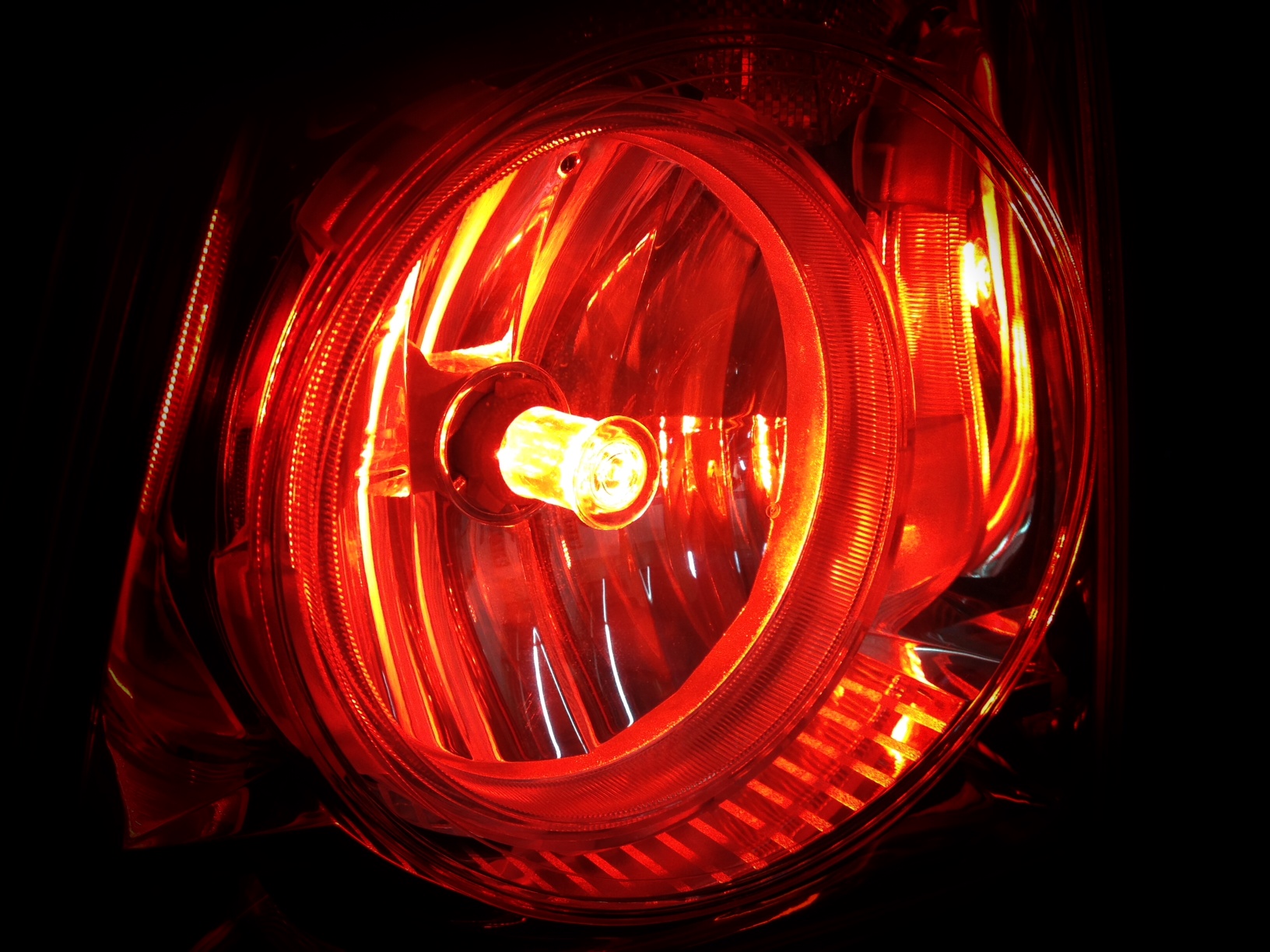
This photo shows how well the new Sylvania LED bulbs work in a traditional reflector housing.



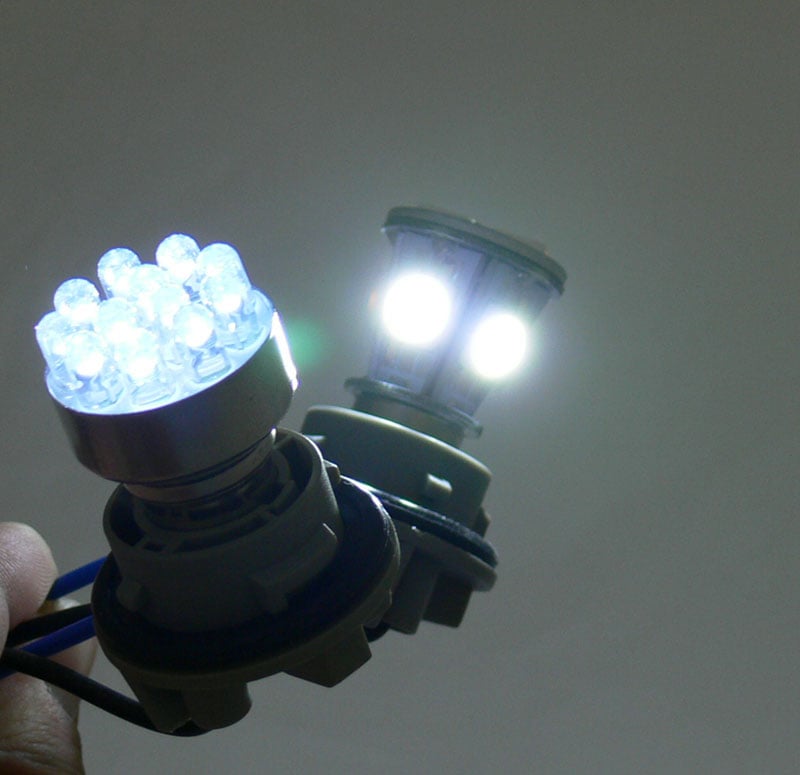

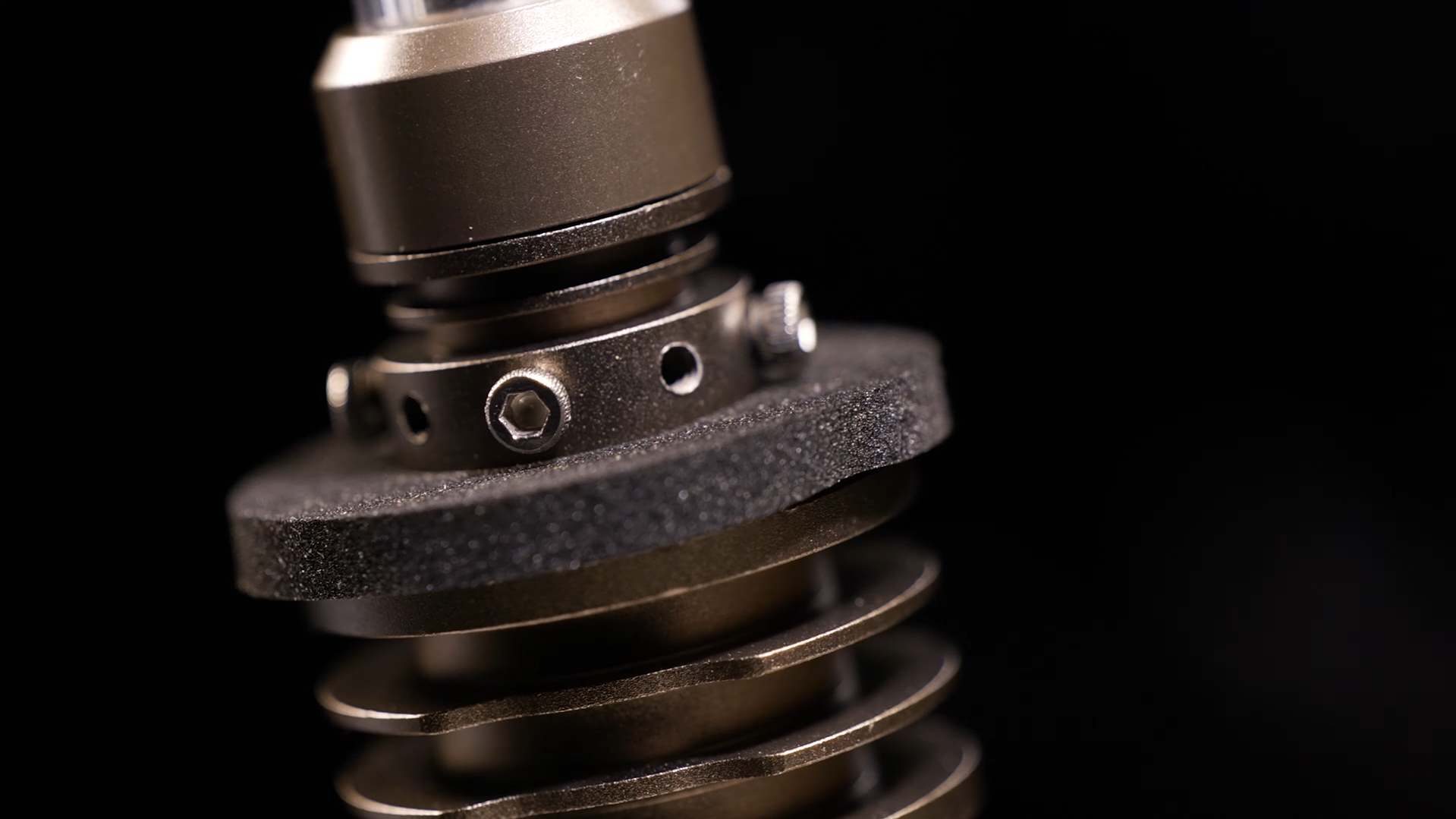
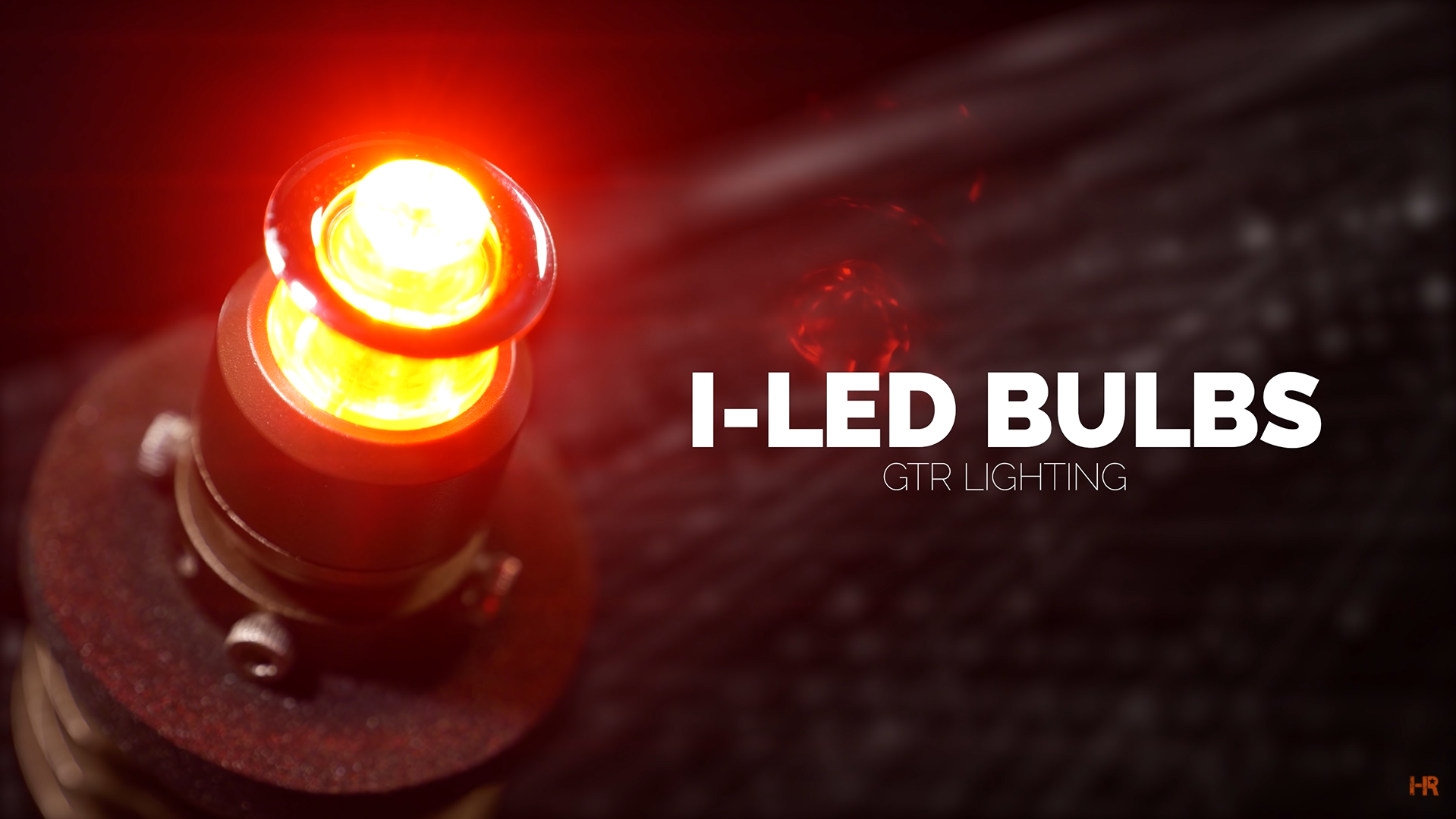

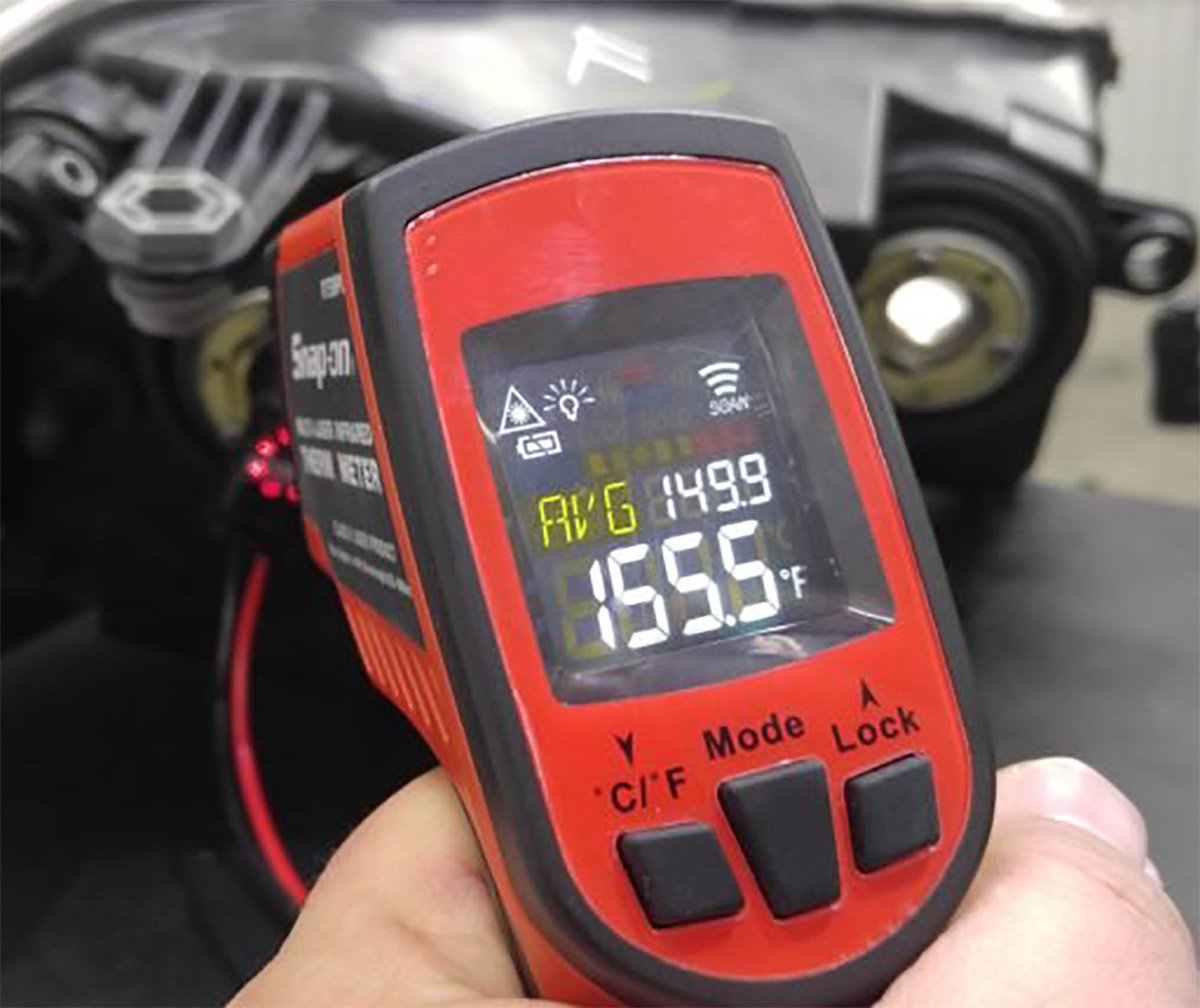
.png?width=300&height=87&name=logo%20(1).png)